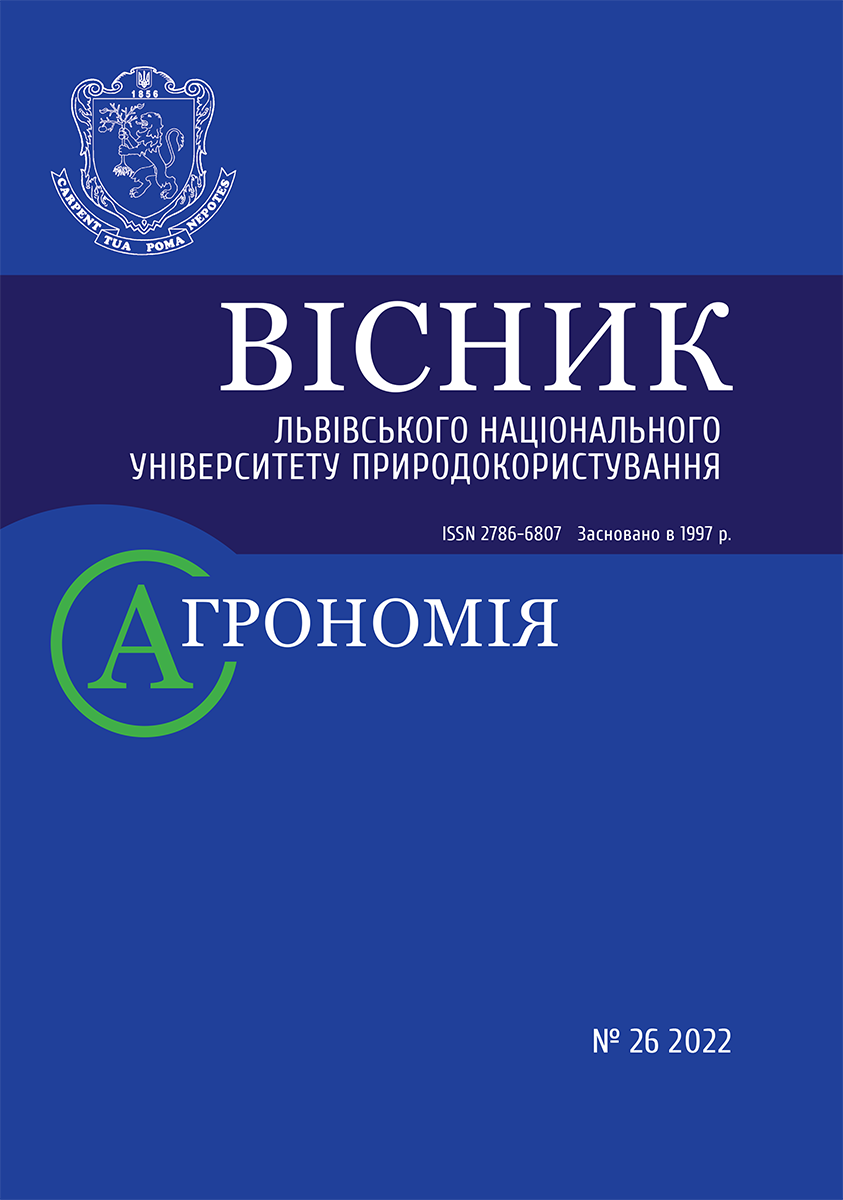PECULIARITIES OF PATHOGENESIS OF THE GARDEN STRAWBERRY WHITE SPOTS IN CONDITIONS OF THE EASTERN PART OF UKRAINE’S
DOI:
https://doi.org/10.31734/agronomy2022.26.137Keywords:
garden strawberry, variety, white spots, pathogen, spreading, development, harmfulnessAbstract
The article presents findings of the studies devoted to the bioecological features of development of the Ramularia tulasnei Sacc. strawberry white spots. The maximum manifestation of the disease was observed in July. The area of necrotic spots on the leaf blades of plants ranged from 5.7 to 27.8 % depending on the degree of damage.
It caused general weakening of the bushes, reduction of yields, and deterioration of the berry quality in the current and subsequent years because of dying 25–28 % of the assimilating surface of strawberries leaves and a decrease in yield by 22–25 %. The disease spots from 0.7 to 8.2 mm in diameter appeared on the plants in late April and early May, and 7–10 days later a white or slightly brown plaque of conidial sporulation was observed. The incubation period lasted from 8 to 14 days. The optimum temperatures for the disease development were +20 – - +24 °С and the average daily air humidity was 75–80 %. During the vegetation period the pathogen was spread by conidia. The knowledge of the bioecological features of the disease development enables planning and carrying out effective protective measures to limit the spreading and development of strawberry white spots. To protect highly susceptible strawberry varieties, it is necessary to apply breeding-genetic, agro-technical measures and to use biofungicides: phytosporin with a consumption rate of 1 kg/ha and phytodoctor - 2 kg/ha.
For industrial and private farms in the eastern part of the forest-steppe of Ukraine, it is advisable to use Roxana and Prisvyat varieties with increased resistance to garden strawberry spotting and the latest fungicides: Topaz 10% k.e. (0.3 l/ha); Chorus 75% v.g. (0.7 kg/ha). The first spraying in the phase of growth of young leaves, the second in the phase of extension of flower stalks.
References
Dermenko O. P. Strawberry leaf spots and measures to limit their development. Agronomist. 2013. URL: https://agronom.com.ua/plyamystosti-lystya-sunytsi-ta-zahody-ob/ (Accessed 11 February 2022).
Hybalo V. M., Rusin O. O. The main diseases of garden (large-fruited) strawberries and methods of combating them. Horticulture of Ukraine: traditions, achievements, prospects: coll. of science works (Mliiv-Uman). Korsun-Shevchenkivskyi: PP I. S. Maidanchenko, P. 303–307.
Kaliuzhnyi Yu. V. Variety damage of strawberry by white spot in the conditions of the central Forest-Steppe of Ukraine. Actual problems of immunity and protection of agricultural crops from diseases and pests: theses addendum. International science and practice conf. (Odesa, September 11–14, 2007). Odesa. 2007. P. 57.
Lobanov G. A. Program and method of sorting fruit, berry and nut crops. Michurinsk: VNIIS. 1973. P. 243–247.
Markovskyi V. S. Garden strawberry. House, garden, vegetable garden. 2002. No 4. P. 53–54.
Rusin O. O. The dynamics of development of the strawberry white spot in the conditions of the Central Forest Steppe of Ukraine. Plant protection and quarantine: interdisciplinary. topics of science coll. Institute of plant protection of the National Academy of Sciences. Kyiv: Kolobih. 2008. Issue 54. P 330–334.
Rusin O. O. White spots of garden strawberry and yield of standard seedlings in the Northern Forest-Steppe (right-bank) zone of Ukraine. Collection of scientific works of the Institute of Bioenergy Crops and Sugar Beet of the National Academy of Sciences. Kyiv, 2013. T. 1. Issue 17. P. 458–461.


